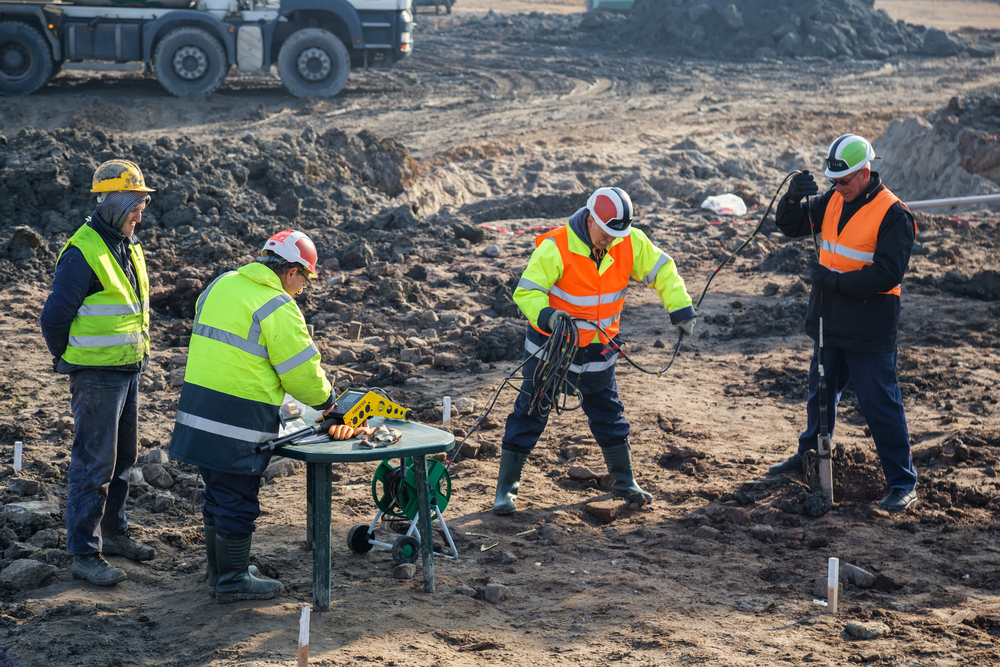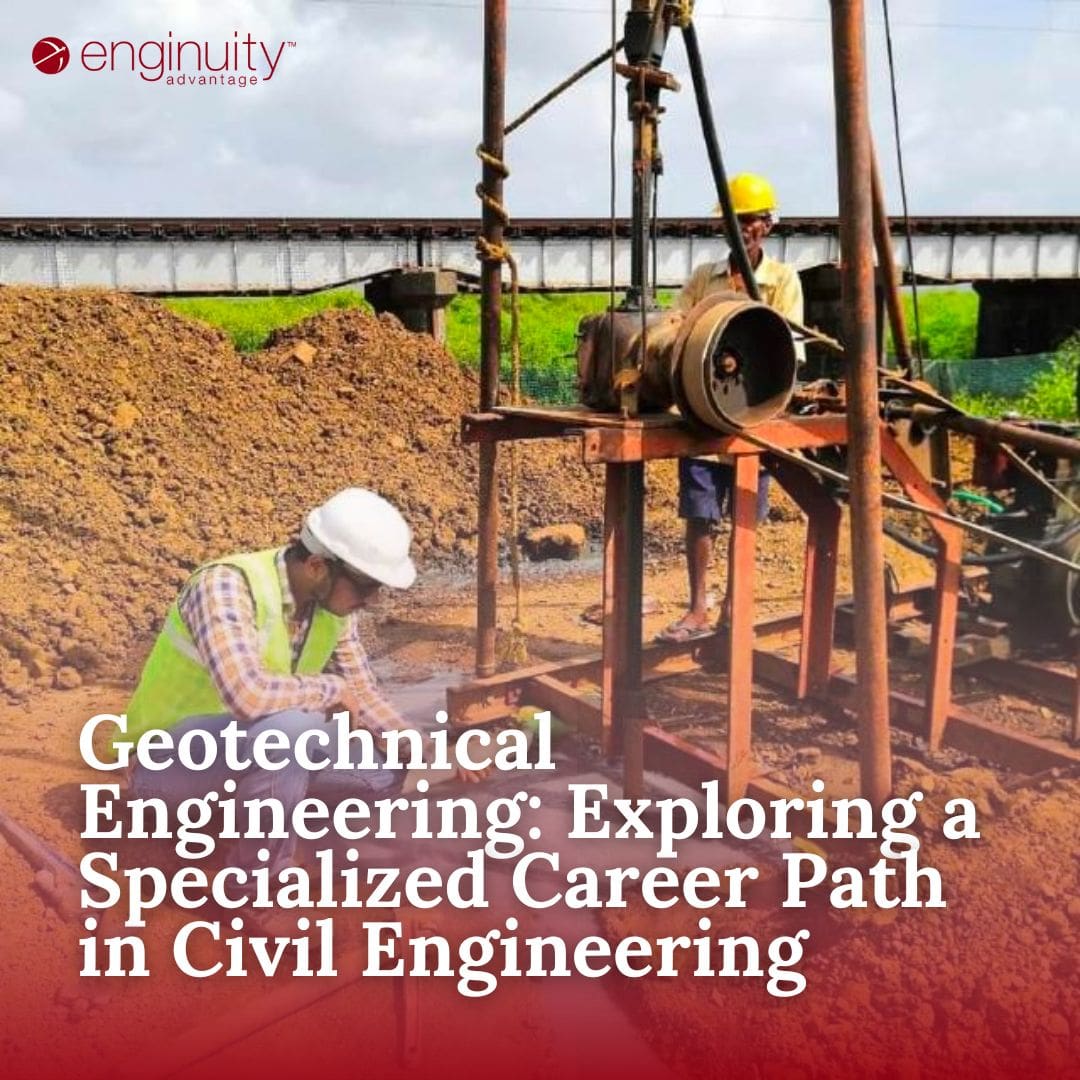The Value of Geotechnical Engineering in Resolving Environmental Challenges and Enhancing Building Safety
Geotechnical engineering functions as a cornerstone in the intersection of ecological stewardship and building safety, offering essential understandings into the actions of dirt and rock under different conditions. This technique not only addresses pushing ecological challenges such as soil erosion and groundwater security but additionally improves the effectiveness of facilities against all-natural threats. By applying critical site investigations and customized mitigation measures, geotechnical engineers play a vital function in guarding both human lives and environmental honesty. Yet, the complexities of these obstacles raise crucial questions about the future direction of this field and its implications for sustainable development.

Duty of Geotechnical Design
Geotechnical design plays an essential function in the style and construction of facilities by dealing with the behavior of soil and rock materials under various problems. This area of design is essential for understanding the communication between structures and the ground, which consists of establishing the load-bearing capability of dirt, assessing stability, and forecasting possible negotiation or failure.
Geotechnical designers are in charge of performing website investigations, which entail sampling and screening dirt and rock to collect data on their chemical and physical buildings. This info is crucial for designing structures, keeping walls, and various other earth-retaining frameworks that guarantee safety and longevity. Furthermore, geotechnical engineering informs the choice of appropriate building and construction approaches and materials, consequently lessening risks connected with soil actions.
Furthermore, the integration of geotechnical design concepts into city planning and ecological administration is essential for addressing obstacles such as ground contamination and groundwater administration. By recognizing geotechnical elements, designers can create sustainable remedies that improve the strength of facilities versus natural hazards, while likewise advertising environmental stewardship. Eventually, the role of geotechnical design is indispensable for accomplishing secure, resilient, and ecologically aware construction methods.
Dirt Disintegration Mitigation
Soil erosion postures a significant danger to both ecological security and infrastructure stability, affecting about 24 billion loads of productive dirt shed each year worldwide. This sensation is exacerbated by elements such as deforestation, urbanization, and inadequate agricultural methods. Geotechnical design plays a crucial duty in developing effective soil erosion mitigation methods that guard both the setting and construction jobs.
One strategy involves the implementation of erosion control approaches such as plants planting, which maintains soil with root systems. In addition, the building of maintaining terraces and wall surfaces can successfully minimize surface runoff and protect vulnerable locations from disintegration. Appropriate drain style is likewise vital; it lessens water build-up and guides excess overflow far from essential structures.
In addition, geotechnical designers employ soil stablizing techniques, such as the application of geotextiles and eco-friendly mats, to enhance soil cohesion and avoid destruction - geotechnical companies in south africa. Regular surveillance and evaluation of erosion-prone websites allow timely interventions, making certain long-lasting sustainability. By incorporating these approaches, geotechnical engineering not just reduces the influences of soil disintegration however also adds to the strength of infrastructure versus environmental obstacles, eventually fostering a safer and extra lasting developed environment
Groundwater Protection Methods
Groundwater works as a crucial resource for alcohol consumption water, farming, and commercial procedures, making its defense necessary for environmental sustainability and public health. Effective groundwater security methods are crucial in reducing contamination dangers and making certain the longevity of this resource.

Routine surveillance of groundwater top quality is likewise crucial, allowing early discovery of contamination resources and assisting in timely remediation initiatives. Employing advanced innovations, such as geophysical studies and remote noticing, aids in recognizing possible dangers to groundwater reserves.
Additionally, public education and learning and stakeholder involvement are vital, cultivating neighborhood support for groundwater protection initiatives. all about geotechnical engineering. By integrating regulative actions, technological innovations, and neighborhood participation, we can produce a comprehensive structure that safeguards groundwater sources while promoting sustainable advancement and building techniques
Landslide Threat Administration
Landslides pose significant risks to both human safety and security and framework, making effective threat administration strategies crucial. Geotechnical design plays a critical role in identifying, examining, and mitigating landslide risks. An extensive understanding of slope security, soil technicians, and hydrology is important for establishing effective danger management strategies.
The primary step in landslide danger management includes complete site investigations, that include geological mapping and soil testing. These examinations aid engineers assess the potential for landslides by identifying critical aspects such as slope angles, dirt structure, and water material. Utilizing advanced technologies such as remote picking up and geophysical studies can boost the accuracy of these assessments.
When dangers are recognized, proper mitigation actions can helpful hints be implemented. These may include engineering remedies such as keeping walls, drain systems, and incline stablizing techniques. Keeping track of systems must be developed to spot indications of ground motion and modifications in water degrees, enabling for positive interventions.

Enhancing Construction Safety
Construction sites typically provide a myriad of dangers that can endanger worker security and project integrity. Geotechnical engineering plays a crucial role in enhancing construction safety by providing essential understandings right into subsurface problems. With detailed dirt and rock analysis, geotechnical engineers can identify potential dangers, such as soil instability, groundwater issues, and seismic vulnerabilities, which may jeopardize the security of building and construction tasks.
Executing geotechnical remedies, such as proper foundation layout and the use of maintaining frameworks, mitigates these dangers dramatically. These services not only make certain the stability of the structures being developed however also create a safer working environment for construction workers.
Moreover, cultivating a society of security through training and adherence to established safety and security procedures even more enhances building and construction website safety. By incorporating geotechnical knowledge into the preparation and execution stages, building projects can attain greater safety criteria, eventually protecting employees and making sure successful task completion.
Conclusion
In final thought, geotechnical engineering offers as an essential discipline in tackling environmental difficulties and promoting building safety and security. Via reliable dirt disintegration reduction, groundwater protection strategies, and landslide threat monitoring, geotechnical engineers contribute to the development of resistant framework.
Geotechnical engineering offers as a cornerstone in the crossway of ecological stewardship and building and construction safety and security, giving crucial insights right into the actions of soil and rock under numerous conditions. Geotechnical engineering notifies the option of suitable construction methods and products, consequently lessening dangers associated with soil actions.
Geotechnical design plays a critical role in creating reliable soil erosion reduction techniques that protect both the environment and building and construction jobs.
Furthermore, geotechnical designers utilize soil stablizing methods, such as the application of geotextiles and biodegradable floor coverings, to enhance dirt cohesion and prevent destruction. With comprehensive dirt and rock analysis, geotechnical designers see it here can identify possible dangers, such as dirt instability, groundwater problems, and seismic susceptabilities, which may compromise the safety and security of building activities.